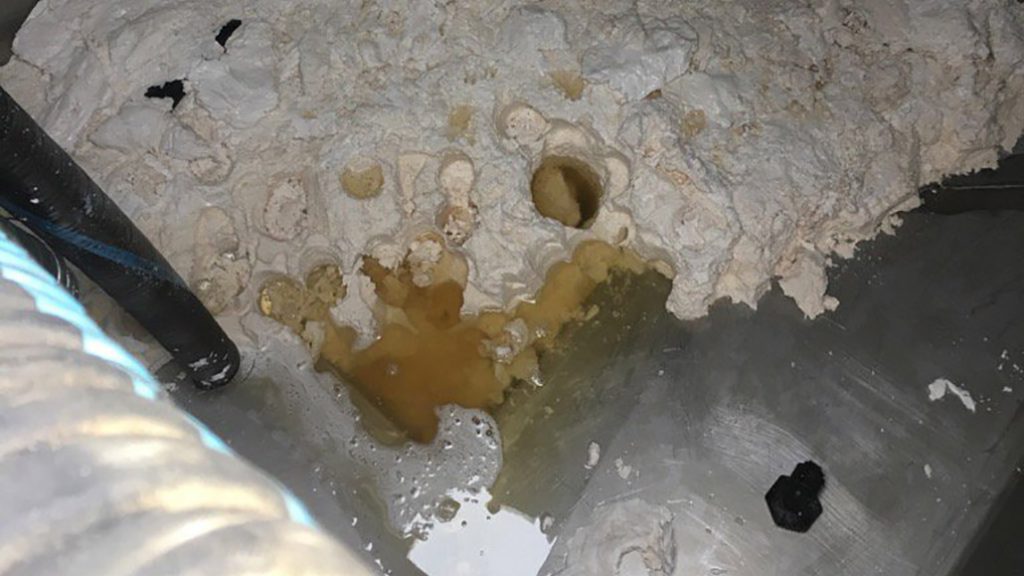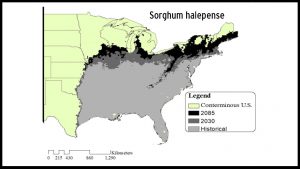Avoiding tank mix errors
CAUTION AND BEST MANAGEMENT PRACTICES

MIXING MULTIPLE PRODUCTS for a single-spray application has its benefits. Indeed, doing so can take advantage of multiple modes of action, apply fertilizer simultaneously, reduce the risk of drift, save time and money, and more.
Good reasons to be sure — but dangers also lurk.
According to Jason Deveau, application technology specialist, and Mike Cowbrough, weed management field crops specialist, both with the Ontario Ministry of Agriculture, Food and Rural Affairs (OMAFRA), tank mixing requires careful investigation.
Letting caution drift in the wind, they say, can cause major problems for crops and equipment.
CLOGGED EQUIPMENT
During a presentation to Diagnostic Days attendees at the University of Guelph Ridgetown Campus in July, Deveau and Cowbrough highlighted the potential for chemicals to react and form solids as a major potential problem. 2,4-D and urea ammonia nitrate, for example, coagulate to form a pasty, solid mass that can clog all sprayer parts.
“So you’re in the field and your sprayer is full of toothpaste. What are you going to do?” says Deveau. “Who knows how long it’s going to take to clean.”
Other chemistries can react — or not properly dissolve — to create suspended solids with a liquid. This can clog filters. Still others need a larger volume of water and longer period of time to dissolve properly. Products like 75 DF, which can be added to tank mixtures to help deal with herbicide resistant Canada fleabane, are an example.
“Some products need more time to dissolve than you can imagine,” Cowbrough says. He adds temperature can be a factor as well, with warm solutions dissolving products faster.
Residues can also stick in parts of the sprayer (lines, filters, pumps, etc.) for a long time, even after flushing. However, the right chemical mixture could potentially break up or dislodge that residue. This can then clog other parts of the sprayer causing uneven spray coverage, and potentially crop damage.
Mixes can also produce unwanted results if not mixed in the right order. In an article from OMAFRA’s Field Crop News, Deveau says the acronym W.A.L.E.S. (wettable powders, agitate, liquid flowables, emulsifiable concentrates, surfactants) is the historic mix-order guideline. Because of growing resistance issues and “today’s more chemically-complex products,” though, that acronym has been expanded to account for microencapsulated suspensions and high-load glyphosate additions (the acronym changing to W.A.M.L.E.G.S.).
BIOLOGICAL DRAWBACKS
Employing multiple products at once also increases the risk of “antagonism,” where products inadvertently cancel or enhance the effects of each other. This can result in crop injury, as well as missed weed control opportunities. A quick leaf-burning herbicide, for example, can stop more systemic herbicides from getting into the plant.
“That’s one big risk if you’re dealing with an unlabeled tank mix […] you may have to spray again,” says Cowbrough.
Chemicals can also separate within the tank. This means they will, despite agitation at mixing, end up being applied separately — the bottom product going solely on one part of the field, and the top product on another. Visually inspecting the mixture (by looking through the top of the tank) may not reveal chemicals have separated.
Checking what chemicals play nice with each other is important, say both Deveau and Cowbrough.
STEPS TO PREVENT PROBLEMS
Both specialists say checking the product label for clear mixing instruction is the first and most straightforward way to prevent mishaps. However, the length, detail, and at times seemingly contradictory information within labels can be both confusing and time consuming. Health Canada’s PMRA Label Search can also be used (search for product names and keywords like “agitation” and “do not mix)” to identify dos and don’ts more quickly.
Calling the manufacturer for the most up-to-date information, though, might be more effective. Talking to a trusted agronomist is also an option.
Home experimenting outside the tank is possible too. Conducting a “jar test” by mixing a sample of the solution can highlight potential problems, and whether temperature has an effect. Look for separation, gelling, and the formation of solids.
This test can also be used in reverse if a problem arises and a sprayer cleanout is necessary. That is, rather than spraying water at the problem — and potentially making it worse — take a sample and see if water or some other cleaning agents can break-down the substance.
When using water in mixtures, filling the tank halfway before adding product, then topping it up, is generally a good strategy, as is premixing.
Regardless, Deveau and Cowbrough say good record keeping is critical.
FINDING THE RIGHT MIX
UAN, ATS, AND PRIMEXTRA
Jason Deveau, application technology specialist with OMAFRA, says a common mix applied for weed control and nutrient management is urea ammonia nitrate (UAN), ammonium thiosulphate (ATS), and Primextra herbicide. While it can be effective, solids can also form in the tank.
“We’re uncertain what chemical reaction is taking place to cause the problem, except that the order of addition really matters, and sulphur is culprit,” says Deveau.
“When we start with UAN and add a ‘high load’ of ATS followed by Primextra II Magnum, we have physical incompatibility. Many growers premix the UAN and ATS and were seeing the curds form.”
He says a possible solution is to reduce the amount of added ATS until the mixture “becomes acceptable.”
“However, perhaps the farmer needed the high load of ATS to overcome a significant sulfur deficiency. In that case we start with UAN, add Primextra, wait for it to mix and then add high load ATS. It seems to solve the problem.”
Deveau adds the product registrant did work on this issue and suggests mixing changes once reports of incompatibility were received.
“They also proposed adding compatibility adjuvants, but we didn’t try that in an effort to avoid one more tank mix partner,” he says. •





















